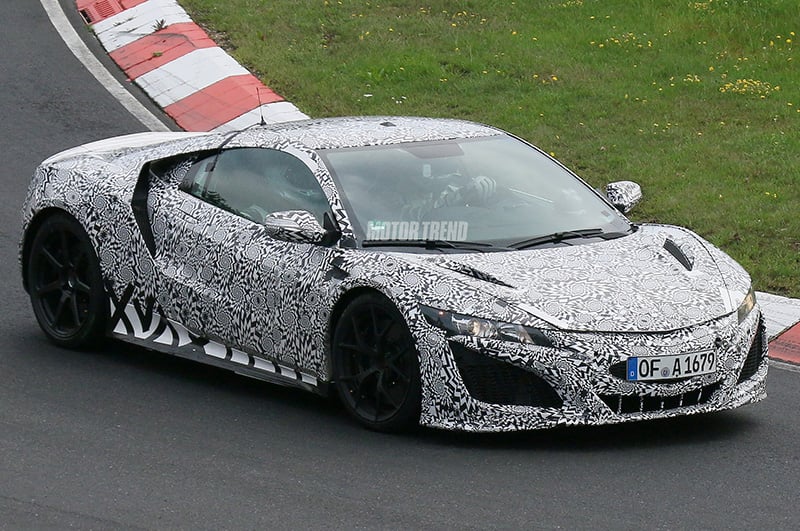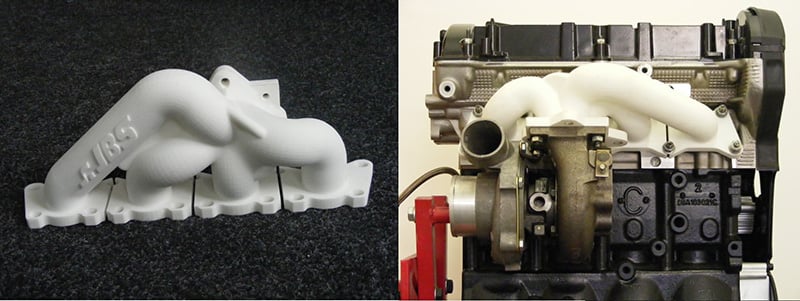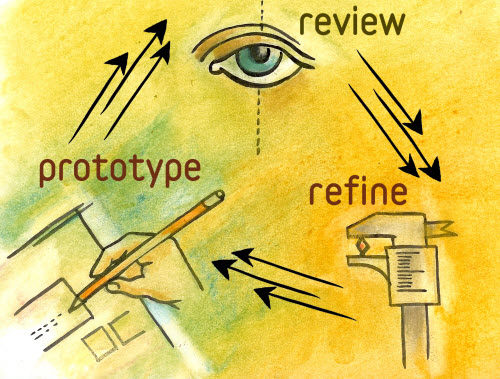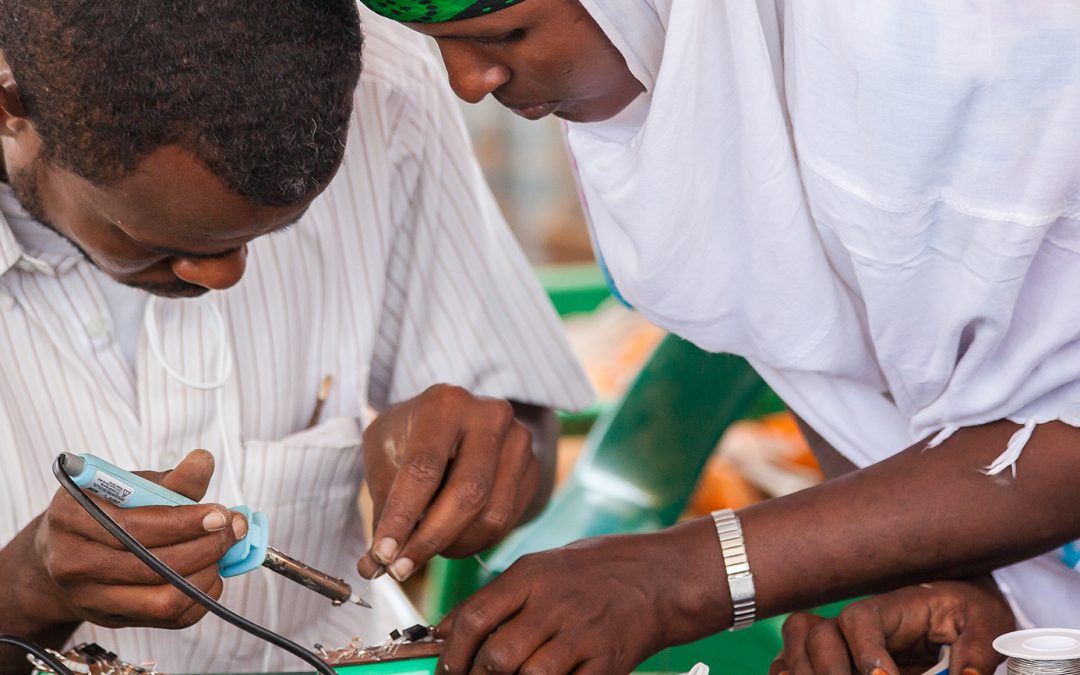Let’s start with what it isn’t.
A pilot. Pilots have historically been the default method used in the humanitarian sector when moving towards new approaches to solving problems.
A pilot is, by definition, a solution that is to be tested on a small scale that is seen to be complete in its own right. Piloting can also be seen as the pre-scale phase of a new approach that focuses on quality, validation, time, cost, adverse events, and initial short-term impact. One stage of a pilot phase may include pilot projects implemented in a number of locations simultaneously.
When moving towards the pilot phase of a solution, pilots are often implemented in a number of locations simultaneously.
Unfortunately, this is not where to start when looking at developing new, creative, or innovative solutions. It is extremely unlikely to find appropriate, effective, and efficient “out-of-the-box” solutions at the onset of the problem-solving or solution-development process.
A pilot also becomes more suitable when looking at translating existing or newly-developed solutions into new contexts. By this stage you should have a pretty good idea that the solution works before calling it a pilot.
The initial stages in the innovation process can be seen as leading towards the first pilot project, and during these initial stages prototyping is critical.
So, actually what is prototyping?
Let’s get back to the roots. Latin. The word prototype comes from the Latin words proto (original) and typus (model).
Prototyping seems like a simple concept until you try and define it or its fast moving friend – “rapid” prototyping. Well for a start, it’s not a pilot. That’s a good start, but this constantly expanding buzzword can lead the uninformed eye to see prototyping as everything between brainstorming and scaling when developing a solution using the process of innovation.
To start, let’s do what everyone else with a smartphone would do when out socializing with friends and a question comes up: Google it.
“A prototype is an early sample, model, or release of a product built to test a concept or process or to act as a thing to be replicated or learned from.”
That actually sounds pretty good. With a little bit of tweaking, Wikipedia could be on to something. How about:
“A prototype is an early sample, model, or release of a product or system built to test a concept or assumption or to act as a thing to be tested and learned from.”
In this sense an initial “prototype” is the first complete solution to the original challenge. The first “prototype” is the first time all parts of a solution are tested together. It is the first time that the inter-dependencies of all components can be tested, analyzed, and refined. Complete does not and should not mean final.

The above picture shows the track testing of the “new” Acura NSX Prototype. This is a complete and working full-scale model of a car. During any following the prototype testing the Acura NSX will undergo significant changes based on the results and feedback of the testing process. In this instance many of the components that make up the complete solution (car) will have been designed, developed, and refined independently before bringing them together. In this instance it is critical to ensure that the performance of individual components is not adversely affected when they work together.
Ok good, but then WTF is rapid prototyping?
As if the name doesn’t give it away. Rapid prototyping seems to logically imply ‘prototyping done quickly’. That makes sense, until we try and find a nominal timeframe for prototyping. Unfortunately, this doesn’t exist and we are left with no reference point from which to set a threshold to distinguish rapid prototyping based on the concept of time.
Back to basics. Google it, again.
“Rapid prototyping is a group of techniques used to quickly fabricate a scale model of a physical part or assembly using three-dimensional computer aided design (CAD) data.”
This is very different to our modified version of Google’s definition of prototyping:
“A prototype is an early sample, model, or release of a product or system built to test a concept or assumption or to act as a thing to be tested and learned from.”
My PhD supervisor once told me that Wikipedia doesn’t always house the perfect answers and to make sure you consult a wide range of resources. Good advice apparently, because when I started digging into this concept a little further I obtained a wide range of opinions and definitions.
If a distinction is to be made between “prototyping” and “rapid prototyping” that isn’t time-based then, broadly speaking, the name “rapid prototyping” is a little misleading and should be considered more as “component prototyping”.
Rapid prototyping can be seen as the bridge between ideas developed through brainstorming or ideation (another classic buzzword) and the first “full” prototype to be tested.
Rapid prototypes are often used to learn about and test different components of concepts, ideas, and assumptions. In fact, going one step further, I would say that prototyping should always be framed around the validation/invalidation of an assumption or the answering of a question.
Can you think of a situation where this doesn’t apply?
Rapid prototyping will often commence before a particular approach to solving a problem has been finalized – creating an overlap with brainstorming and ideation. Several prototypes can be created of different ideas that respond to one challenge to gauge user feedback and inform the design process.
Rapid prototypes are either “physical or graphical” in form and range from rough paper sketches and interactive simulations, to model component parts that look and function like part of a final product. The physical or graphic nature of a “rapid prototype” creates a definite distinction from earlier stages of a solution-development process such as brainstorming, which is purely conceptual in nature.
The definition of “rapid” or “component” prototyping might be as follows:
“A rapid or component prototype is a physical, graphical, or auditory representation of one or more components or sub-systems of a solution built to test a concept or process or to act as a thing to be tested and learned from.”

The image above on the left shows the rapid prototype of an exhaust manifold,
which is used to direct exhaust gases from an engine into a turbocharger. The rapid prototype was manufactured out of plastic using 3D printing. It is used in this case to test the positioning of the turbocharger as can be seen in the below on the right.
This low-fidelity rapid prototype is a cheap and effective way to test one part of what is a complicated system. If the engine were started, the model exhaust manifold would melt and fail. However, it was not intended for that purpose.
Rapid prototyping looks to use the most efficient and effective testing methods available. This leads to the use of low-cost, low-fidelity models that are “good enough” to obtain the results required – anything above this could be seen as a waste.
What are we left with in a nutshell?
The process of prototyping bridges the gap between conceptual ideas and real, workable solutions. Prototyping allows solution developers to answer questions and validate/invalidate assumptions leading to the iterative testing, learning, and refinement of components and complete solutions.
A clear distinction between “rapid prototyping” and “prototyping” is required and this should be considered when discussing the subject. Ultimately this distinction relates more to complexity and scope as opposed to speed, although the limited scope of a “rapid prototype” will inherently lead to a more agile and “rapid” process of iterative refinement.

Prototyping has a critical and distinct place in the innovation process. Simply put, prototyping is the bridge between concepts and a refined solution. The process of prototyping covers both “rapid” or “component” prototyping and “full-solution” prototyping, and is cyclical in nature. The independent implementation of the first refined solution the first pilot of a solution.
Does this approach work outside of products?
If anything written above is correct, the answer should be yes. In fact, the concepts should be applicable to any solution-development process.
The concept applying prototyping to product development is relatively easy to envision, but how would this approach work when developing a system or a process?
For example, the simplified 4-step process of a ration distribution in a refugee settlement.
- Refugees bring forward their family ration card, which links them and their families to a ration of, for example, food that they are eligible to receive;
- The ration cards are checked to ensure that they are valid and are being presented by the correct owner;
- The ration card holder then moves through the distribution system to receive his/her allocation of, for example, rice, grain, oil, and sugar etc.
- Once collected, the items need to be transported, often over long distances to the owner’s home.
How could the process of prototyping be used to re-think or improve the time efficiency of this system? This is specifically related to the challenge that during the process, queues at different distribution points are too long and people are seen to be waiting for long periods of time while they transport their rations back to their shelters.
Rapid Prototypes
Each of the four key components can be looked at as a single component of the overall distribution system. As a result, to simplify developing the overall system, each of the major components can be looked at independently. Rapid prototyping can be used to effectively test and refine each of these key components. For example:
Step 3: Rapid prototyping could be used to test different methods of distributing “bulk” items such as 50kg bags of grain into small rations. One example would be to test whether rationing different products into bags of set weights (1kg, 2kg, 5kg, 10kg) before the distribution would be more time-effective and accurate. This test could be carried out quickly and easily in silo from the remainder of the distribution process.
Step 4: If, for example, the transportation of goods back to a family’s shelter was a blockage point, rapid prototyping could be used to test different transport methods such as, using donkey carts for a small number of families; using larger mini-buses, vans, or trailers for multiple families; or looking at a wheelbarrow hire/borrow system for individual households. Testing can begin with low-fidelity prototypes such as sketches and small models to test the community’s initial reactions during an actual distribution. The testing and refinement of different approaches can then be done in isolation from the rest of the distribution process – working for example with the owners of donkey carts etc.
Prototypes
Once each of the key components has been developed sufficiently, it is essential that the complete system be tested. This will highlight any issues or benefits relating to dependencies between the different steps. One obvious example in this instance would be that if the efficiency of one or more upstream steps are improved dramatically and yet a down step is not, then a bottleneck will be seen at that step. This would not be highlighted during rapid prototyping, but is clearly essential.
Based on the above “rapid” prototyping of steps 3 & 4, it would be essential to understand what influence the use of pre-rationed bags would have on transportability. This could bring forth a number of additional questions or expose a number of assumptions that would then require testing or validation through further prototyping.
Does this relate to your experiences or am I barking up the wrong tree?
Photo credit: Audi-Sport.net/Motortrend.com

